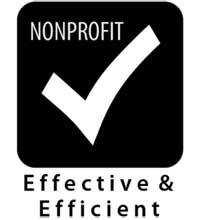
Seng Moon, from Myanmar’s Kachin State, was lured by her sister-in-law to go to China for a well paying job as a cook. In the car, her sister-in-law gave her something she said was for motion sickness. When Seng Moon woke up in China, her hands were tied behind her back. After several months, she was moved to a Chinese family where she was tied up in a room for another one to two months. “Each time when the Chinese man brought me meals, he raped me,” she said. “After two months, they dragged me out of the room. The father of the Chinese man said, ‘Here is your husband. Now you are a married couple.’” Seng Moon soon gave birth to a son. When she asked to return home, the husband said, “No one plans to stop you. If you want to go back home, you can. But you can’t take my baby.”
Through determination and luck, she was able to escape her captors and return to Myanmar, with her son. They hide in a camp for Internally Displaced Persons. Her horrific experience of being a forced bride will never leave her. She says, “I’m afraid the Chinese family will try to find me.” All this, according to a detailed and devastating report by Human Rights Watch: “Give Us a Baby and We’ll Let You Go.”
July 30 marked World Day against Trafficking in Persons. The State Department’s 2020 Trafficking in Persons Report, lists China as one of the world’s worst offenders. China is a “Tier 3” Nation – a status it shares with North Korea and South Sudan.
According to the TIP report, China trafficks women and girls from within China, from the surrounding countries, and from as far away as Africa for “forced concubinism leading to forced childbearing and sex trafficking via forced and fraudulent marriage to Chinese men.” Not only is China an insatiable market for sexual slavery, but China also is a major purveyor of sexual slavery around the world: “Traffickers subject PRC national men, women and children to forced labor and sex trafficking in at least 60 other countries.”
All too often, these crimes are committed with the assistance of Chinese officials: “Despite continued reports of law enforcement officials benefiting from, permitting, or directly facilitating sex trafficking and forced labor, the government did not report any investigations, prosecutions or convictions of law enforcement officials allegedly involved in the crime.”
Reggie Littlejohn, Founder and President of Women’s Rights Without Frontiers, stated, “The reports of sexual slavery in China are heartbreaking. They are the inexorable legacy of the One Child Policy. Because of the fatal combination of son preference with a coercive low birth limit, baby girls have been selectively aborted, abandoned, and medically neglected to the extent that there are now 30 to 40 million more males living in China than females. The resulting collapse in the marriage market is perhaps the reason the Chinese government turns a blind eye to sex trafficking – and in some instances, even facilitates it.
Littlejohn continued: “We cannot forget the tremendous atrocities the CCP is committing against the Uyghurs and other ethnic minorites in Xinjiang, also known as East Turkistan, including forced labor, forced abortion and involuntary sterilization. We call upon the Chinese government immediately to prosecute officials who are colluding with sex traffickers, to stop prosecuting victims of sex trafficking as criminals, to end all coercive population control, and to take effective measures to protect the lives of baby girls. We also call upon them to end their heinous crimes against the Uyghurs.”
Learn more about our Save a Girl Campaign in China.
Watch a video about our Save a Girl Campaign in China.
Related Links
Human Rights Watch: Give Us a Baby and We’ll Let You go
State Department, 2020 Trafficking in Persons Report



